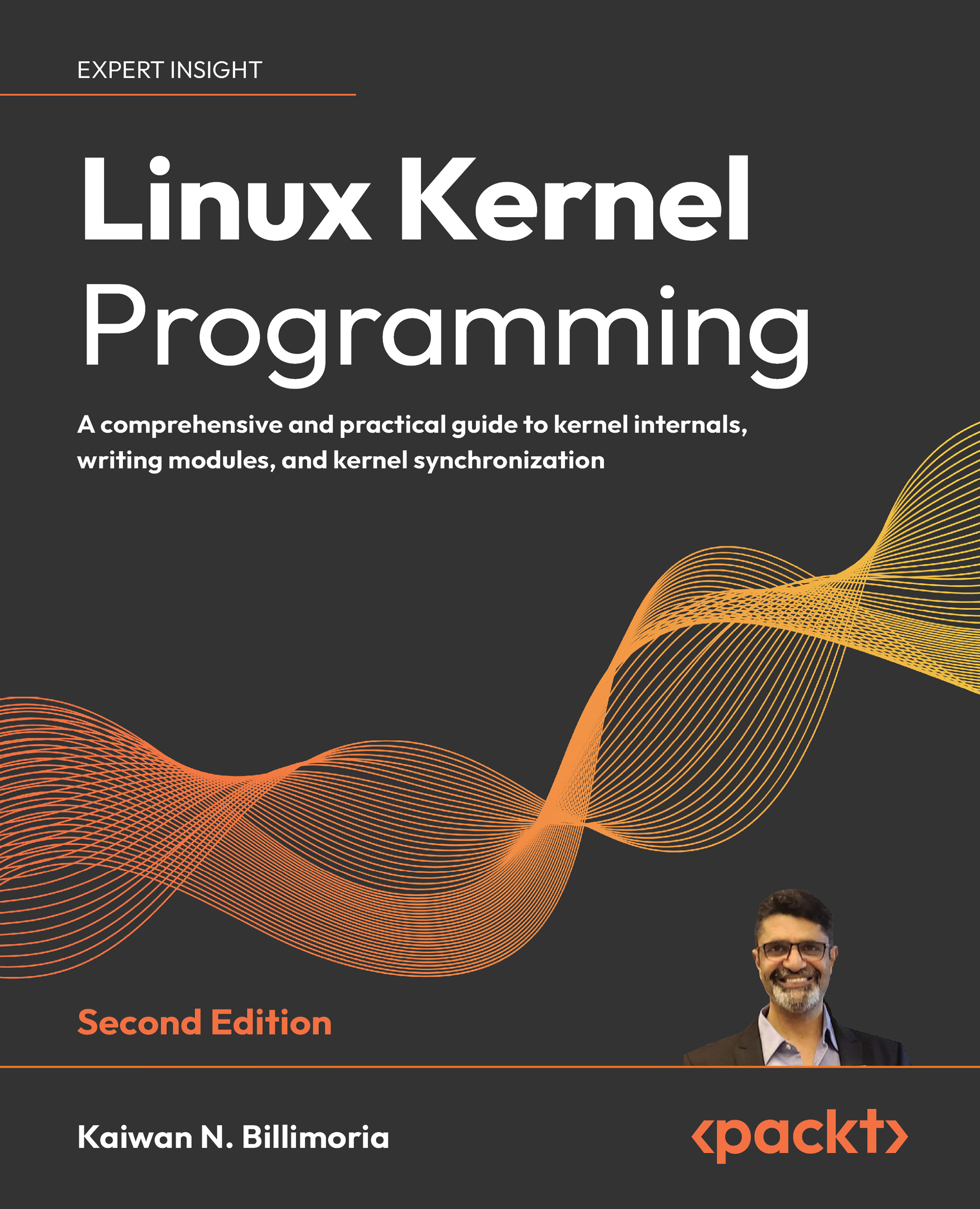Kernel build for the Raspberry Pi
A popular and relatively inexpensive Single-Board Computer (SBC) to experiment and prototype with is the ARM-based Raspberry Pi. Hobbyists, tinkerers, and, to some extent, even pros find it very useful to try out and learn how to work with embedded Linux, especially as it has a strong community backing (with many Q&A forums) and excellent support. (You’ll find a brief discussion and picture of a Raspberry Pi board in Online Chapter, Kernel Workspace Setup, in the Experimenting with the Raspberry Pi section. By the way, there are several well-known Raspberry Pi clones – like the Orange Pi – that work very well; the discussions should apply equally to them.)
There are two typical ways in which you can build a kernel for the target device or Device Under Test (DUT) that we’ll use here, the Raspberry Pi 4 Model B (64-bit):
- Build the kernel on a powerful host system, typically an x86_64 (or Mac) desktop or...

































































